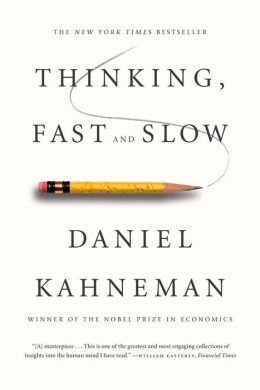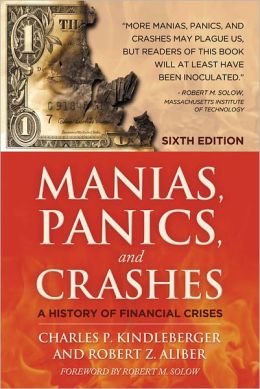Daniel Kahneman won the Nobel Prize for his work in psychology underlying economic behavior. His book, Thinking, Fast and Slow, explains a theory that two systems drive the way we think. System 1 is fast, intuitive, and emotional; System 2 is slower, more deliberative. These two thought processes can arrive at different results even given the same inputs.
I quote from a review of the book in the New York Times:
System 2, in Kahneman’s scheme, is our slow, deliberate, analytical and consciously effortful mode of reasoning about the world. System 1, by contrast, is our fast, automatic, intuitive and largely unconscious mode. It is System 1 that detects hostility in a voice and effortlessly completes the phrase “bread and. . . . ” It is System 2 that swings into action when we have to fill out a tax form or park a car in a narrow space. (As Kahneman and others have found, there is an easy way to tell how engaged a person’s System 2 is during a task: just look into his or her eyes and note how dilated the pupils are.)
More generally, System 1 uses association and metaphor to produce a quick and dirty draft of reality, which System 2 draws on to arrive at explicit beliefs and reasoned choices. System 1 proposes, System 2 disposes. So System 2 would seem to be the boss, right? In principle, yes. But System 2, in addition to being more deliberate and rational, is also lazy. And it tires easily. (The vogue term for this is “ego depletion.”) Too often, instead of slowing things down and analyzing them, System 2 is content to accept the easy but unreliable story about the world that System 1 feeds to it. “Although System 2 believes itself to be where the action is,” Kahneman writes, “the automatic System 1 is the hero of this book.” System 2 is especially quiescent, it seems, when your mood is a happy one.
Now think about Manias, Panics and Crashes: A History of Financial Crises by Charles P. Kindleberger and Robert Z. Aliber in terms of Kahneman's two systems. Presumably it is System 2 that uses financial analysis to determine whether to purchase or sell shares of a given stock at a given price, or uses detailed analysis of pros and cons in deciding whether one can afford a house one might purchase and the mortgage payments that purchase would require. On the other hand, System 1 might be more involved in the emotional aspects of decision making.
Kindleberger and Aliber are concerned with manias, especially in the run up of prices during a bubble in the stock market or housing market, and with panic, especially in the run down in prices as the market crashes. The emotional content of mania or panic would presumably be System 1 responses. For those whose lazy System 2s leave decision making to the intuition for stock and house purchases, bubbles lie in wait.
As Pogo says, "we have met the enemy....and he is us."


No comments:
Post a Comment